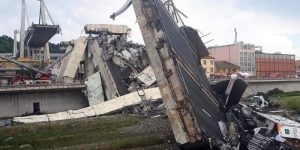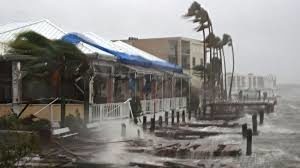Hurricane Damage Inspections – Florida | Forensic Engineers
Hurricane damage inspections are done to Protect your property and ensure compliance with Florida building codes after a storm. Forensic Engineers provides professional hurricane damage inspections across Florida, evaluating structural integrity, safety, and compliance for condominiums, co-ops, and multifamily buildings.
What Are Hurricane Damage Inspections?
Hurricanes and severe storms can compromise building safety. Under Florida Statute 553.899 and the Florida Building Code, property owners are responsible for assessing structural damage and performing timely repairs.
Forensic Engineers specializes in:
-
Visual structural hurricane damage inspections and assessments post-storm
-
Detailed finite element analysis (FEA) for critical load-bearing components
-
Laboratory and field testing for concrete, steel, and other materials
-
Engineer-stamped reports for insurance, legal, and board compliance
Florida Hurricane Damage Inspections Services
Phase 1 – Visual Structural Assessment
-
Examine foundations, slabs, and columns for cracking, spalling, or settlement
-
Inspect balconies, stairwells, walkways, and rooftops for storm damage
-
Evaluate parking garages, retaining walls, and mechanical supports
-
Identify electrical hazards caused by water intrusion or wind damage
Phase 2 – Advanced Structural Evaluation
-
Core sampling and lab testing of concrete, steel, and other structural elements
-
FEA-based load analysis, deflection checks, and moment calculations
-
Recommendations for retrofitting, repairs, or replacements
All inspections include comprehensive, engineer-stamped reports, photos, and actionable recommendations to ensure safety and compliance.
Why Choose Forensic Engineers in Florida?
-
30+ years of forensic and structural engineering experience
-
Licensed engineers (PEs) specializing in hurricane-prone coastal areas
-
Emergency response for urgent storm inspections
-
Compliance with Florida Building Code, ACI 318, and IBC standards
-
FEA and advanced testing to evaluate structural resilience

Common Hurricane Damage Issues We Find
-
Roof membrane or truss failures
-
Balcony or railing failures
-
Cracks, spalling, or concrete deterioration
-
Corrosion of steel reinforcement
-
Water intrusion and electrical hazards
Frequently Asked Questions
1️⃣ Who needs a hurricane damage inspection?
Any condominium, co-op, or multifamily building impacted by storms across Florida.
2️⃣ Are advanced tests always required?
No. Phase 2 testing is triggered only when Phase 1 identifies structural concerns.
3️⃣ What’s included in the inspection report?
Engineer-sealed findings, photos, corrective recommendations, and compliance documentation.
4️⃣ How quickly should an inspection be completed?
Post-hurricane inspections should be scheduled as soon as safely possible to ensure compliance and insurance coverage.
5️⃣ Can Forensic Engineers handle emergency inspections?
Yes — our licensed engineers can respond rapidly to assess storm damage.
Deliverables From Forensic Engineers
✅ Complete hurricane damage inspection report for Florida properties
✅ Photos and notes documenting all structural concerns
✅ FEA-based deflection, load, and moment analysis
✅ Engineer-stamped recommendations for repairs or retrofits
✅ Support for insurance claims, board meetings, and compliance
Contact Forensic Engineers Today
Schedule your hurricane damage inspection anywhere in Florida today:
📞 561-371-6102
📧 info@sb-4d.com
Hurricane damage inspections
Hurricane damage inspections are performed by EMA Staff engineers. In case of natural disasters including hurricane damage & water damage, flood damage, roof damage by storm, wind and hail, foundation scouring and damage and structural damage, a quick and coordinated recovery is key. Not only is the safety and well being of our loved ones at stake but the welfare of society depends critically on the resilience of its business community to natural disasters.
We have experienced structural engineers & forensic engineers inspectors in Hurricane damage assessment.We at EMA are prepared to mobilize our staff of engineers, certified inspectors, and technicians to aid in the recovery process. To assist in coordinated long term recovery, our structural & forensic engineers offers the following areas of expertise:building envelope,
Hurricane damage inspections
Structural damage assessment
Repair claims ( residential & commercial)
Forensic Engineering
Foundation collapse analysis
Roof damage reports
Wind damage reports
WOOD FRAME STRUCTURE
EXTERIOR:
* Fence support broken at the ground or blown over
* Landscape damage, largest size broken limb, trunk to check against F scale
* Roof blown off or displaced (check wall-roof connection; sometimes it is not evident)
* Broken windows — will indicate wind forces entering the building
* Brick blown off walls or in place
* Chimney and roof vent condition. May cause carbon monoxide poisoning if used in damaged condition
* Above-ground utility services — connected or off
INTERIOR:
* Always look ahead and keep the exterior in sight
* Do not touch exposed electrical wires or lights
* Check wall-roof connections. Look for evidence of separation
* Check for diagonal fracture of wall surfaces, if rigid like gyp board
* Watch for spilled liquid in and near kitchens, bathrooms, and garages. Very dangerous!
* Look for loose structural items that might collapse. Always assume they will.
* Check stability of interior walls
* Check what happened to occupants if they were in the structure during the storm
* Check conditions of any basements, cellars, out buildings
The roofing system is one of the most vulnerable to storm damage, because so many factors can have an impact on a roof. A hurricane damage inspection of the roof is based on a number of key indicators, whether the roof has been hit by high winds, a downed tree, a catastrophic hailstorm, or even a lightning strike.
- A tree on the roof, or roof or wall sections that have been blown open by a storm, are some of the most obvious signs of potential damage and risk. Safety comes first, so stay out of the building until a contractor has examined it for structural hurricane damage inspections.
- Signs of storm damage to a roof can often be evident while standing on the ground. Missing shingles, metal pieces displaced from around the chimney, damaged exhaust pipes, roof valleys, outer edges or angles where the roof meets the walls, can sometimes be seen from the ground.
- Other damage can be assessed from inside. The attic can be inspected for leaks or water damage. Water stains might be seen on the ceiling or walls. These all point to the need for repairs or a roof replacement.
- When on a ladder or on the roof itself (for safety, we DO NOT recommend that property owners try this themselves), a Certified NIRC Contractor will look for excess granules in the gutters. These granules may have been loosened by hail impacts. While people hear stories of “golf ball-sized hailstones,” the fact is that most hailstones are small – yet they still can cause significant damage to the roof. And loose granules should not be dismissed or overlooked. Granules are vitally important to the functioning of the roof: They protect the asphalt coating from ultraviolet light, add coloring and beauty, and provide fire resistance.

